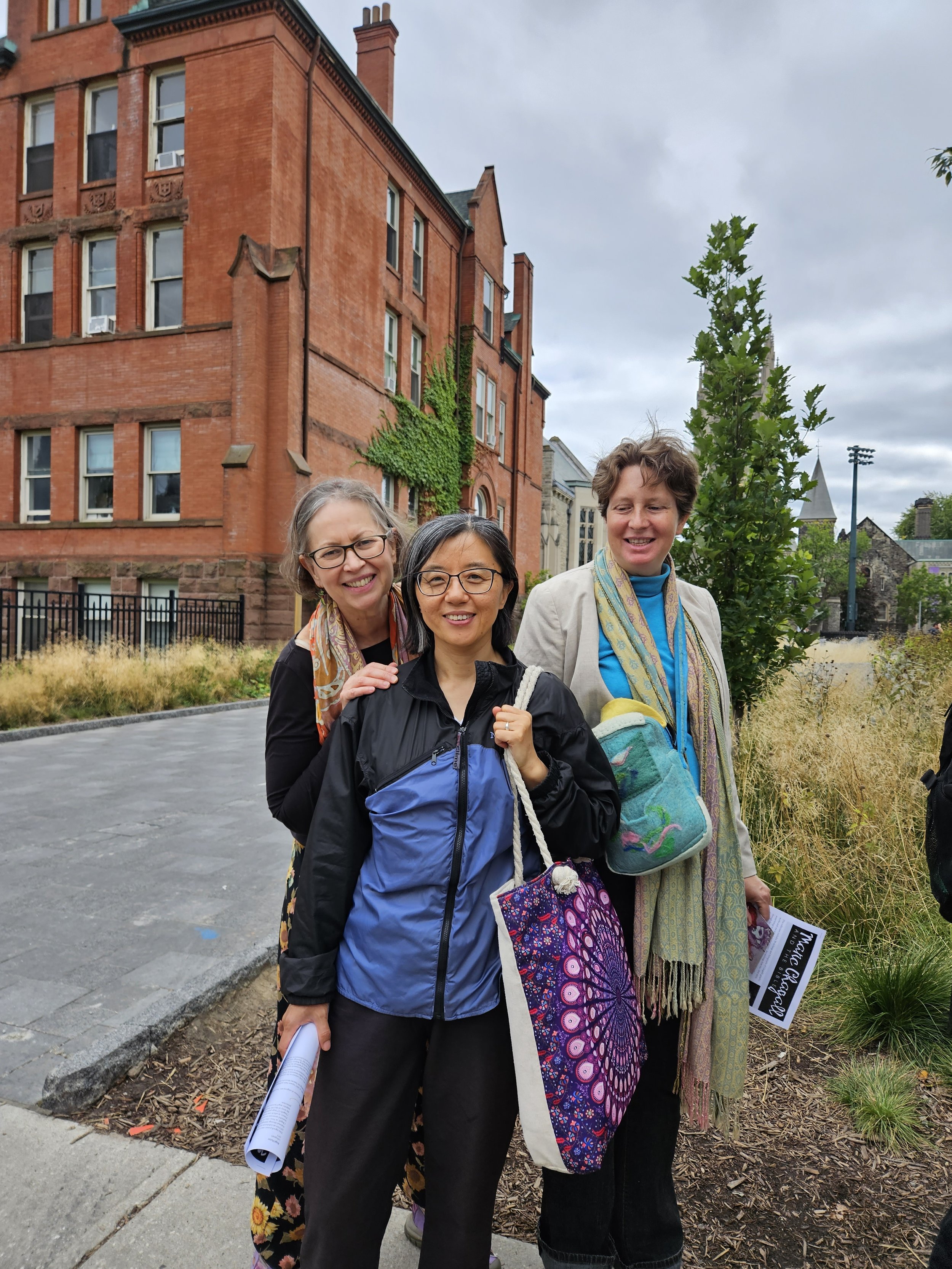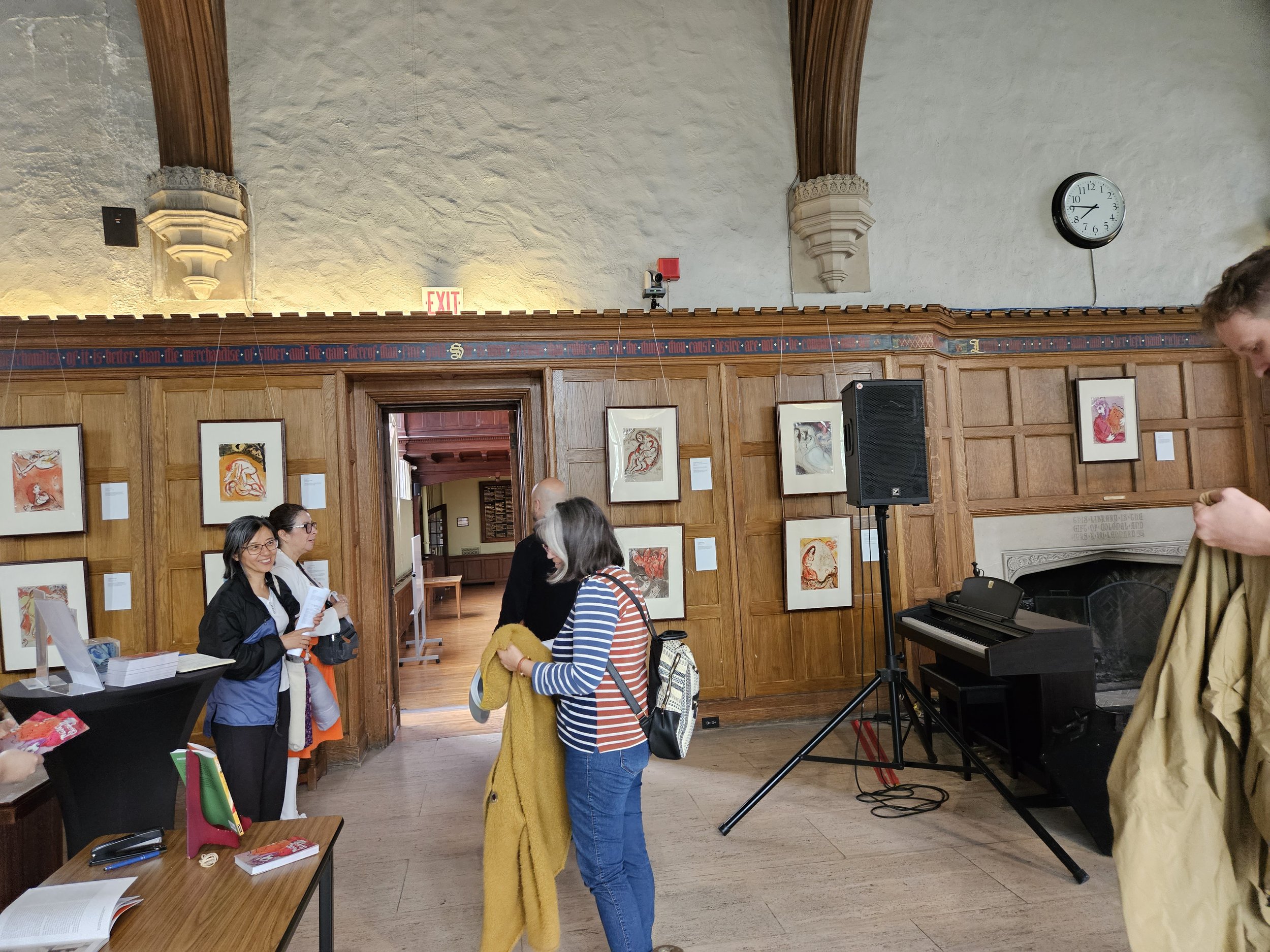The Seminary Resumes On-Site
by Shannon Young
New group of Seminarians flanked by Toronto Seminary Directors
From left to right: Rev. Patrick Kennedy, Cecilia Velasquez (Lima, Peru), Min Wang-de-Jong (Copake, NY), Gloria Connell (Santiago, Chile), Juroce Miranda (Uribici, Brazil), Christopher Coffey (Chapel Hill, NC), Daniil Kalinov (Moscow, Russia), Claire Jerram (Baltimore, MD), Silke Chatfield (Bristol, UK), Shannon Young (Spring Valley, NY) and Rev. Jonah Evans
On September 3, the Seminary of the Christian Community in Toronto began another year with nine students, many of whom had waited many years to arrive due to many circumstances, including the recent travel restrictions. Students came from around the world, Peru, Chile, Brazil, the United States, Russia and the UK. The Seminary experience began with a moving Sacrament of Marriage conducted by Rev. Patrick Kennedy. This was a fitting beginning, as the overarching theme for this year's Seminary studies is Christ's redemptive deed on Golgotha and continued redemptive work in the sacraments.
Wedding photo of Peter and Lydia. Published with their permission.
Throughout the week the Seminarians became acquainted through sharing their moving autobiographies, focusing on the highlights of their lives, particularly the road to the Seminary.
The week culminated in a visit to an art exhibit at Wycliffe College featuring etchings and lithographs of Marc Chagall (1887 to 1985). Lithography is "a printmaking technique . . . in which an oily substance is applied to a stone or other medium to transfer ink to a paper surface" (Exhibit brochure).
The exhibit focused on the stories from the Old Testament. In preparation for this commission, Chagall, of Jewish heritage, in 1931 spent two months in Tel Aviv immersing himself in the ambiance of the land of the Jewish people. The experience deeply penetrated him and imbued him with the confidence that he could successfully capture the scenes from the Old Testament that profoundly moved him. Chagall says that "ever since early childhood, I have been captivated by the Bible. It has always seemed to me and still seems today the greatest source of poetry of all time" [(Wullschlager, Jackie. Chagall: A Biography. 2008, 305). Wikipedia, "Chagall"]. The result is 105 prints capturing key events of Biblical history. Several of the pieces explore the Fall of Adam and Eve. Studies in Angels also figure prominently. King David is another favorite subject, as well as the important role women played in the Old Testament.
Chagall's life's journey would be impacted greatly by World War II and the Holocaust. He was born in Vitebsk, a village in Belarus, into a Hasidic Jewish family. His artistic talents led him to study in Russia, and subsequently France, which became his home until his death. During World War II, in 1941, after the Nazi occupation of France, Chagall was stripped of his French citizenship and arrested along with many other Jews. Fortunately, the New York Museum of Modern Art had given him permission to enter the United States, so he was rescued and permitted to leave. He returned to France in 1948 and memorialized 84 Jewish artists who had been slaughtered in a poem entitled, "For the Slaughtered Artists: 1950":
"I see the fire, the smoke and the gas; rising to the blue cloud, turning it black. I see the torn-out hair, the pulled-out teeth. They overwhelm me with my rabid palette. I stand in the desert before heaps of boots, clothing, ash and dung, and mumble my Kaddish. And as I stand—from my paintings, the painted David descends to me, harp in hand. He wants to help me weep and recite chapters of Psalms" [(Chagall, Marc. Marc Chagall on Art and Culture, editor: Benjamin Harshav. 2003, 114-115). Wikipedia, "Chagall"].
"David and his Harp", Poster of the Exhibit at Wycliffe College
Chagall observes of his experience of creating the art pieces: "Whenever I bent over the lithography stone. . . it was as though I was touching a talisman. It seemed as though I could pour all my sadness and joys into it" (Exhibit brochure).
Due to the Holocaust the population of Chagall's beloved village, Vitebsk, was reduced from 240,000 to 118 [Davies, Serena (10 November 2008, 65). "Chagall: Love and Exile by Jackie Wullschlager – review". The Telegraph. Wikipedia, "Chagall"].
Marc Chagall, 1911, I and the Village, oil on canvas, Museum of Modern Art, New York [Wikipedia, "Chagall"]
The exhibit concludes with some pieces of the crucifixion of Christ as a universal symbol of suffering. Chagall observed of his art: "My painting represents not the dream of one people but of all humanity" (Wikipedia, "Chagall").
Marc Chagall, 1912, Calvary (Golgotha), Museum of Modern Art, New York [Wikipedia, "Chagall"]
The events of the Toronto Seminary's first week beautifully launched the Seminarians into what promises to be a rewarding and challenging year of immersion in the material most important to the Movement of Religious Renewal of the Christian Community.
Our Author:
Shannon discovered the Christian Community eight years ago through her son, Giancarlo, who has autism. Her quest to find an educational environment that would best serve his development led them to the cloud forest of Costa Rica where they stayed for four years. It was then she learned of a Waldorf School in Spring Valley, NY for children with learning differences. Arriving in the Spring Valley community changed the course of both of their lives. Within a short time Shannon would decide to leave her position as a university English professor and pursue full time study in the Christian Community Seminary. She is in her third year of study, having spent one year in Hillsdale, NY, one year in Stuttgart, and now in Toronto.










